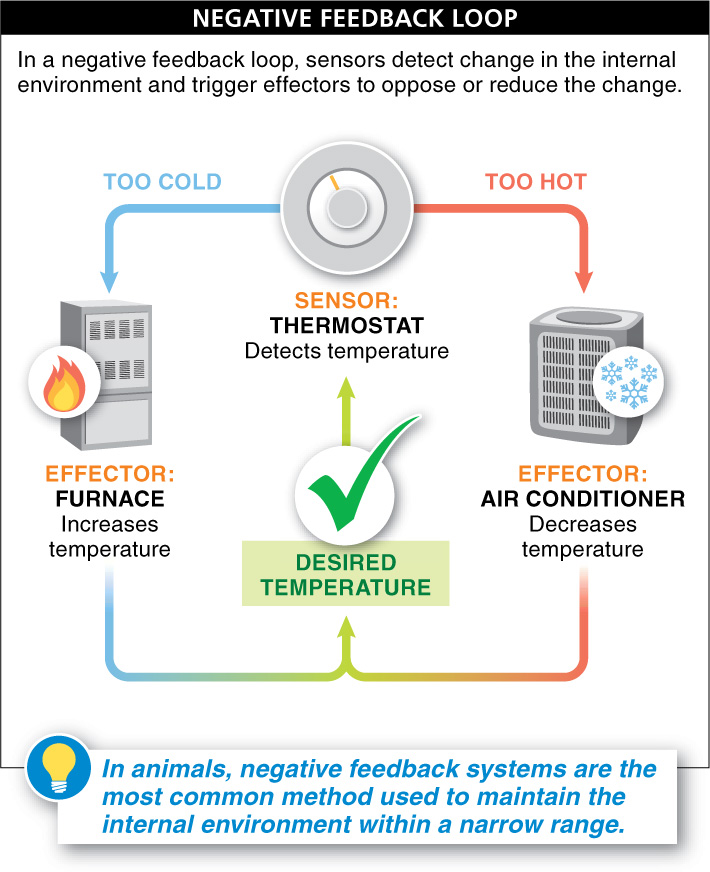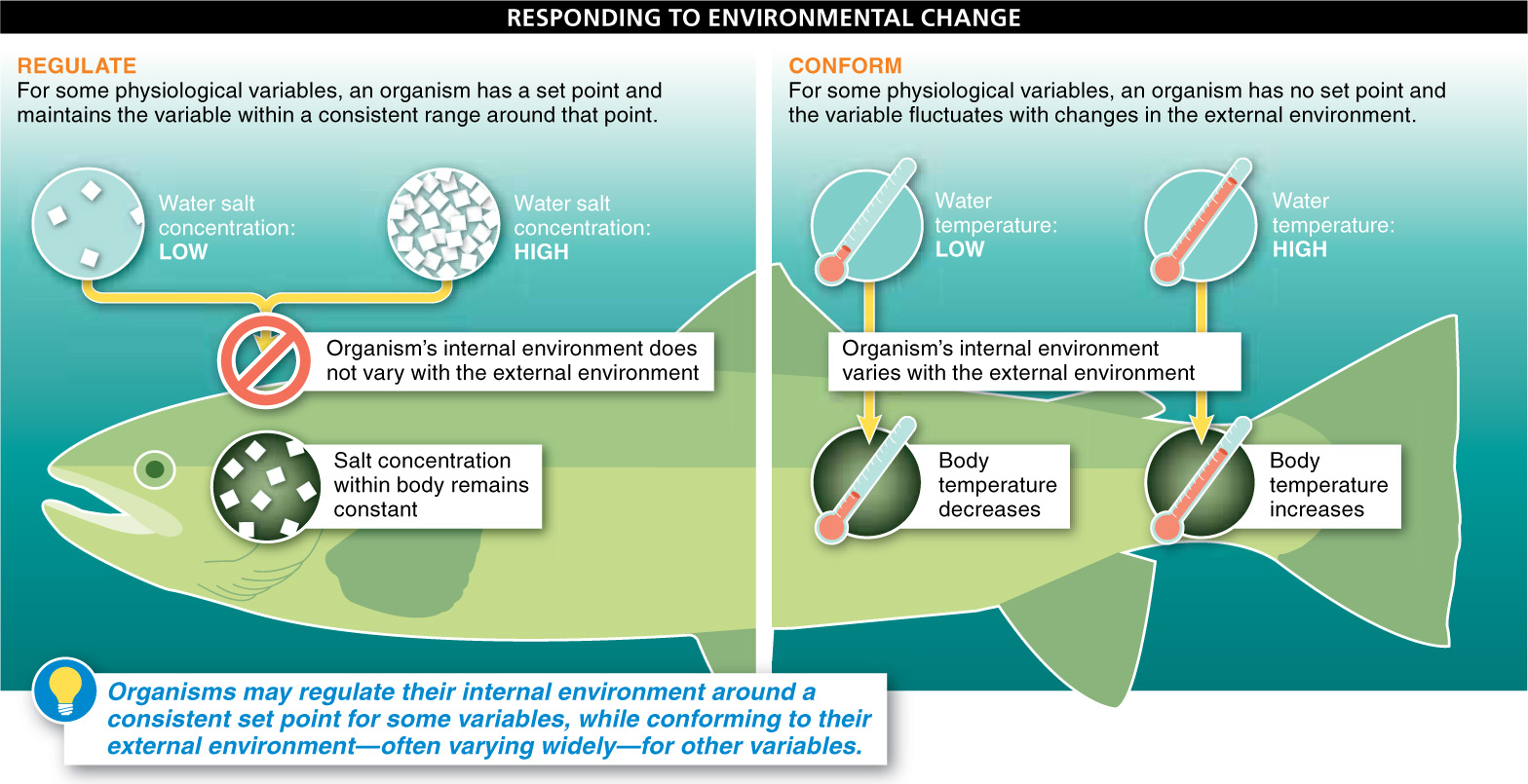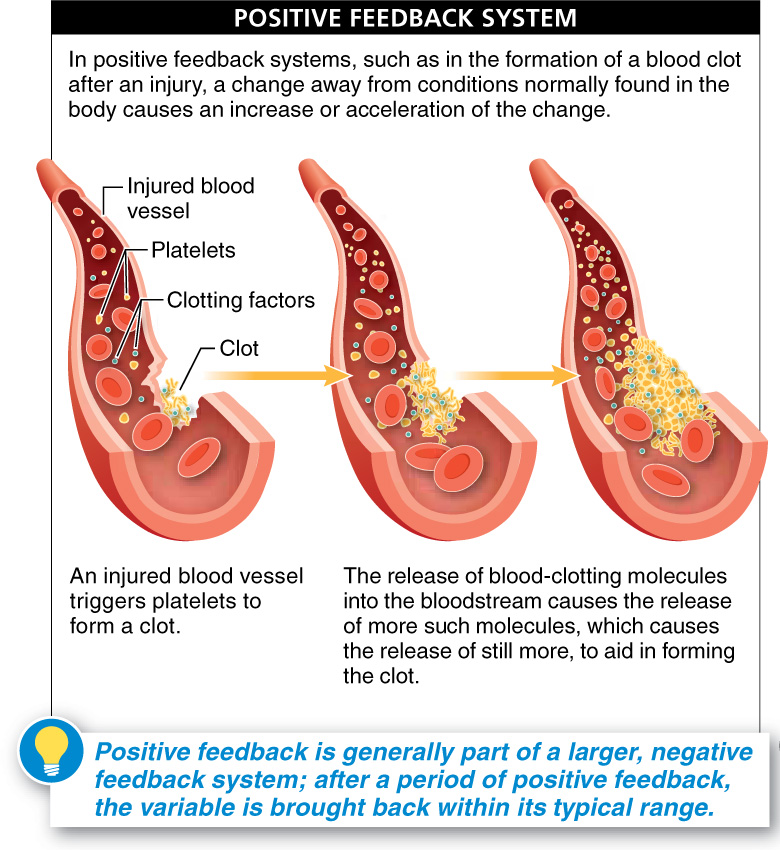

For animals to maintain homeostasis with regard to a particular physiological variable, they must have a set point for that variable, a target value or range to which the organism can return. Most vertebrates have set points for a variety of physiological variables, including body temperature, water-
In the face of changes in its external environment, how does an organism maintain its homeostasis, its constant internal environment? The most common method involves the regulatory mechanism of negative feedback, in which sensors detect a change in the internal environment and trigger structures called effectors to oppose or reduce the change. This cycle of detection, response, and change is called a negative feedback loop (FIGURE 20-15).
An example of a negative feedback loop that we encounter in everyday life is the regulation of room temperature in a house, which involves a sensor (the thermostat) and two effectors (a furnace and an air conditioner). The thermostat contains a sensor that detects the temperature in the house. If the temperature drops too low, the thermostat triggers an effector—
808
In the human body, negative feedback systems are the most common method used to maintain the internal environment within a narrow range. These systems include those that maintain body temperature, regulate levels of sugar in the bloodstream, and control the levels of salt and other solutes in body fluids. We explore these systems in detail later in this chapter.

It is important to note that while some groups of organisms, called regulators, maintain homeostasis for a certain variable (as we’ve just described for temperature), other organisms, called conformers, may have no set point for that variable, and the variable may fluctuate with external changes. Animals differ in the traits for which they are regulators and those for which they are conformers. Most fishes, for example, are conformers with regard to the temperature of the surrounding water but are regulators when it comes to the concentration of salt in their blood and tissues (FIGURE 20-16).
In addition to negative feedback systems, organisms also have a small number of positive feedback systems, in which deviations from conditions normally found in the internal environment cause an increase or acceleration of the change, in the same direction. Such systems push the body away from homeostasis and often initiate cascading processes that increase the rate at which the system deviates from the normal range. For this reason, positive feedback systems, if unchecked, can become highly unstable.
Why don’t we bleed to death when we get a cut?
An example of a positive feedback system is the blood-

809
Generally, positive feedback systems are part of larger, negative feedback systems, which, after a short period of positive feedback, bring the variable (and the organism) back to within its original, normal range of internal environmental conditions. After blood clotting has stopped the loss of blood from a damaged vessel, other chemical signals interrupt the positive feedback loop, stop the further release of blood-
TAKE-HOME MESSAGE 20.9
For animals to maintain homeostasis with regard to a particular physiological variable, they must have a set point for that variable to which the organism can return. Through negative feedback, sensors detect a change in the internal environment and trigger effectors to oppose or reduce the change. Positive feedback systems, which are much less common, oppose homeostasis in response to a change, pushing the body away from normal conditions and increasing change in the same direction.
Give at least one example of negative feedback and at least one example of positive feedback.
Human body temperature is regulated by negative feedback. When the temperature moves above or below the desired temperature range, a mechanism is initiated to bring the temperature back within the desired range. Blood clotting is an example of positive feedback. In response to an injury, platelets release compounds that help patch the wound and attract additional platelets.